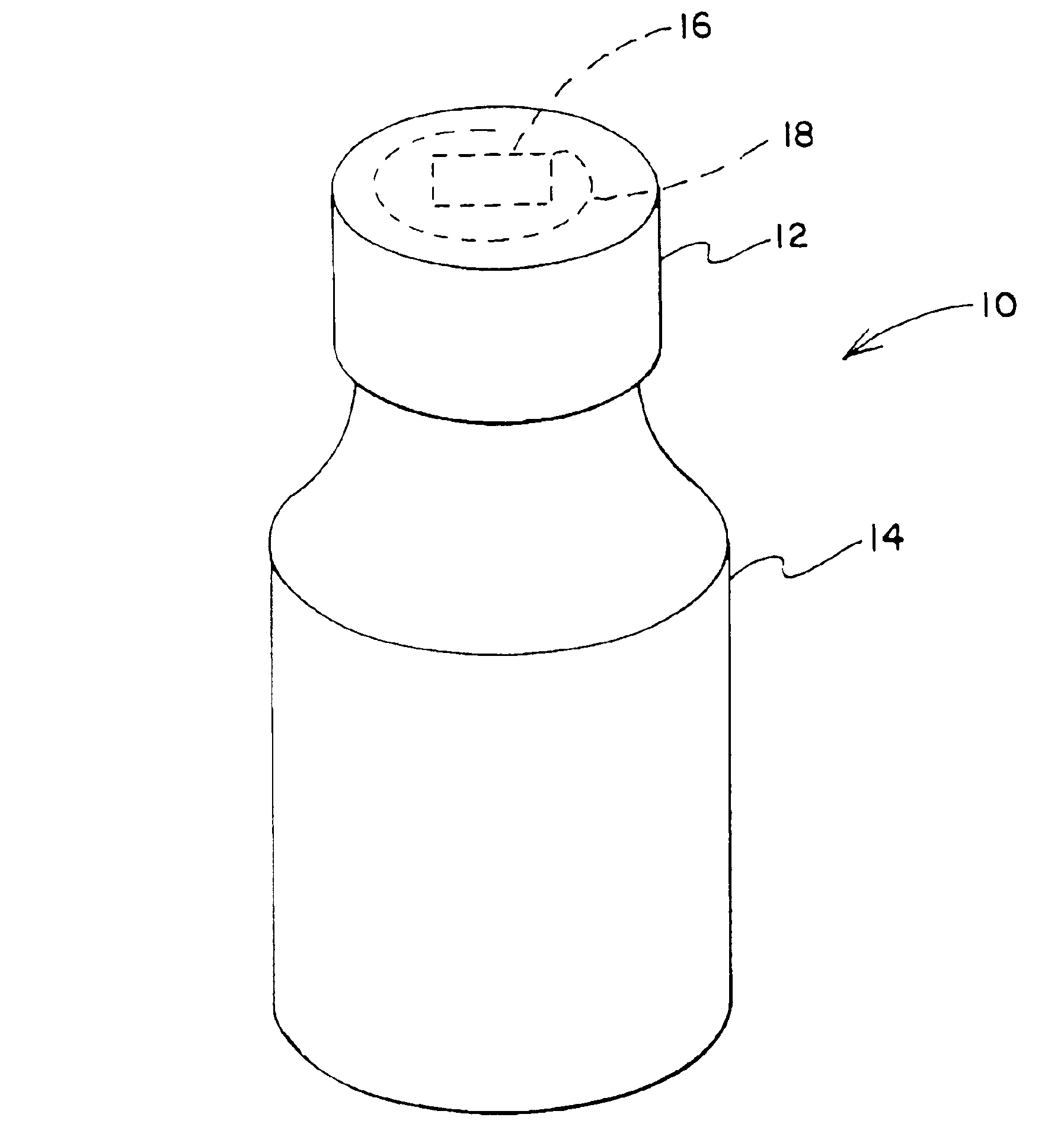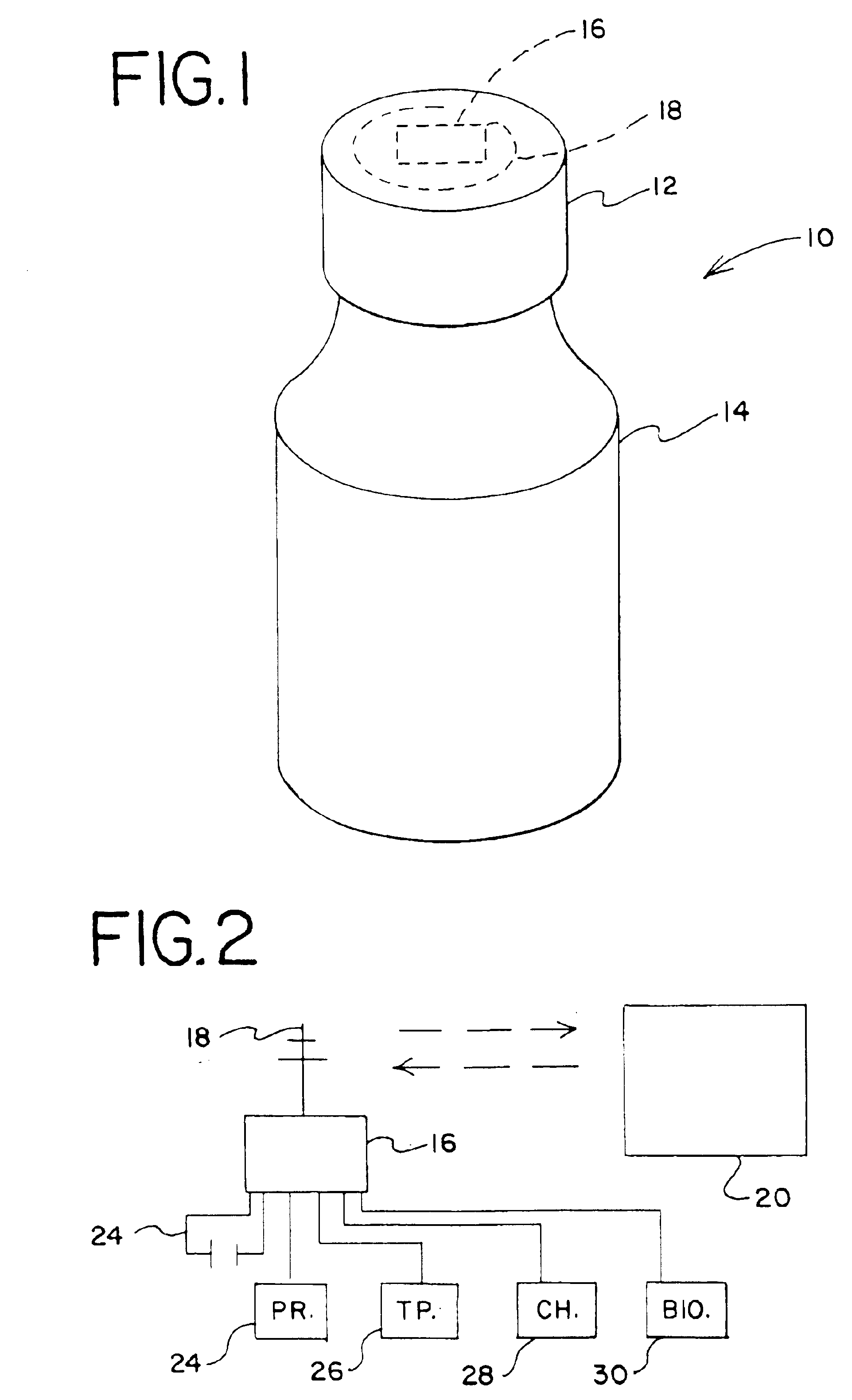A product package embodying the principles of the present invention includes an integrated circuit device which is configured for radio frequency
interfacing with associated equipment. The package is configured such that the integrated circuit device is disposed within the package, thus assuring that the device remains associated with the package's contents. Notably, this arrangement facilitates use of the device for applications apart from product tracking and
inventory control, including product promotions, storage, and
dissemination of product information, and quality assurance including tamper-indication. A
packaging machine for writing information on, and or reading information from, the integrated circuit device is also disclosed.
By the arrangement of the present invention, a method of conducting a promotion can be practiced by the provision of such a package, including the radio frequency integrated circuit disposed therein. By inputting radio frequency information to the integrated circuit, promotional information can be “written” onto the circuitry. This permits the promotional information to later be retrieved from the integrated circuit by a radio frequency reading device. The antenna of the package serves two purposes, with power provided to the integrated circuit through the
antenna coupling eliminating the need for an internal power supply. Simultaneously, promotional information can be written onto and / or retrieved from the integrated circuit through the
antenna coupling.
It is contemplated that the only information actually “written” onto the integrated circuit device could be a “serial number” or like product code which would uniquely identify an individual package, rather than simply the product itself. This approach would require that the bulk of the promotional information be written to an Internet or other
electronic database rather than be stored on each individual integrated circuit. As will be appreciated, a desirable aspect of the present
system concerns the capability of writing promotional information, or promotional codes, on the integrated circuit during the capping process, or as the capped product enters various retail outlets. This arrangement desirably makes it possible to eliminate the long
lead time typically required for planning promotions, and the required pre-build, and potential scrapping of promotional inventories.
As will be appreciated, this aspect of the present invention provides significant advantages over current tamper-evidence systems. Existing technology for pressurized or vacuum-packaged containers typically involves packaging that breaks, permanently deforms, changes color, or makes audible sounds when the package is opened by the
consumer. Such arrangements include tamper bands on plastic closures which break away from the closure when the package is opened.
Metal lug caps used on
vacuum pack containers typically create an audible “pop” sound from the elastically deformed top of the
metal closure when the vacuum within the package is released during opening. It is contemplated that initially, consumers will benefit from this quality assurance arrangement at the point of product purchase, as the product is read by a
scanner or like reading device located at the check-out of the retail establishment. It is expected that as use of such arrangements become more widespread, consumers will have suitable appliances and reading devices for
home use that will enable the reading of tamper-evidence and other quality assurance information directly from the package by the
consumer.
Inclusion of a suitable micro-audio device permits the present invention to provide a “real-time” message to the
consumer at the time of product opening, thus obviating the need for a radio frequency reading device or like
scanner. It is contemplated that such an arrangement could provide an audible message that the product is “approved for consumption”, or “okay to drink” when the closure is removed from the container, provided that the circuitry of the package has monitored an acceptable pressure /
time history record.
A further aspect of the present invention contemplates a method of providing enhanced
inventory control and dissemination of product information. Information regarding the time and date of packaging, sometimes referred to as the “born on date” can be readily written on the integrated circuit of the present package. Other
processing information can also be provided for subsequent access as may be required. Product information, beyond that which can be easily printed on a package
label, may be written on the integrated circuit of the present package, including
nutritional information, product recipes, and the like. Once again, it is alternately contemplated that only a unique identification code be actually written on the integrated circuit, with the bulk of other
relevant information being written on an Internet or other
electronic database which can be later accessed through the unique
product identification code.
 Login to View More
Login to View More  Login to View More
Login to View More 

